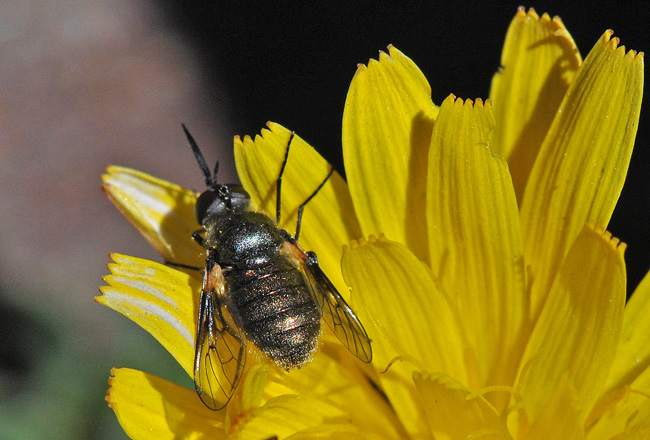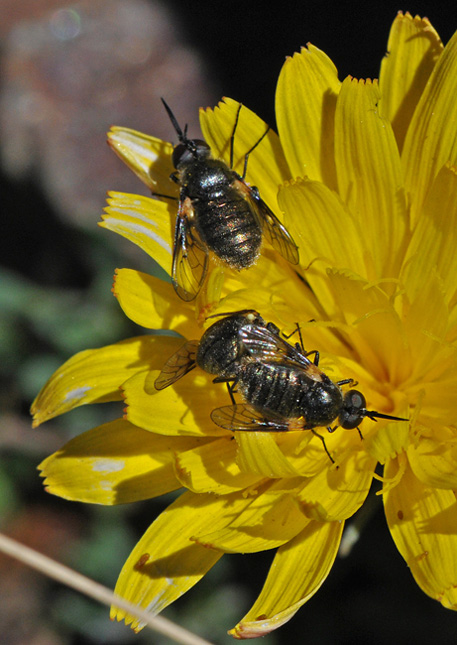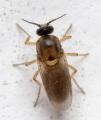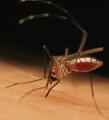Diptera.info :: Identification queries :: Diptera (adults)
|
Usia, Sierra Nevada.
|
|
| Guillermo Booth Rea |
Posted on 03-09-2008 20:06
|
|
Member Location: Granada Posts: 276 Joined: 08.02.08 |
Hi there, Here you have a couple of photos of Usia shot in Sierra Nevada, S Spain at 2500 masl. Photo taken 26/07/2008. Size aprox. 6 mm. Guillermo Booth Rea attached the following image:  [137.43Kb] |
|
|
|
| Guillermo Booth Rea |
Posted on 03-09-2008 20:07
|
|
Member Location: Granada Posts: 276 Joined: 08.02.08 |
Another shot.
Guillermo Booth Rea attached the following image:  [146.4Kb] |
|
|
|
| jorgemotalmeida |
Posted on 03-09-2008 20:15
|
|
Member Location: Viseu - PORTUGAL Posts: 9296 Joined: 05.06.06 |
I never saw an Usia so lately! Usually they are early species... |
| Guillermo Booth Rea |
Posted on 03-09-2008 23:08
|
|
Member Location: Granada Posts: 276 Joined: 08.02.08 |
This one is from the end of July. I guess that high in the mountains they come out later. The flowers up there flower later and this year they were particulary late. |
|
|
|
| David Gibbs |
Posted on 04-09-2008 09:09
|
|
Member Location: Bristol, UK Posts: 833 Joined: 17.06.06 |
These appear to be typical of the taxon i call Usia aenea, however, U. similis is unknown to me and probably very similar. |
|
|
|
| Guillermo Booth Rea |
Posted on 04-09-2008 11:55
|
|
Member Location: Granada Posts: 276 Joined: 08.02.08 |
I thought this would have been a different species than a previous U. aeneus I published here. I think it was a bit smaller, and seems to have fewer white hairs on the torax. Also, the black markings above the light ones at the base of the wings are more marked. Although, I could be wrong. Thanks, Guillermo. |
|
|
|
| David Gibbs |
Posted on 04-09-2008 13:21
|
|
Member Location: Bristol, UK Posts: 833 Joined: 17.06.06 |
Guillermo Booth Rea wrote: I thought this would have been a different species than a previous U. aeneus I published here. I think it was a bit smaller, and seems to have fewer white hairs on the torax. Also, the black markings above the light ones at the base of the wings are more marked. Although, I could be wrong. Thanks, Guillermo. do you mean this one?. If so you are possibly right, the one in the gallery does not look right for aenea. However, aenea as i currently understand it is highly variable and possibly a complex of sibling species. |
|
|
|
| Guillermo Booth Rea |
Posted on 04-09-2008 14:05
|
|
Member Location: Granada Posts: 276 Joined: 08.02.08 |
Yes, that is the one I meant. Reading again, I noticed I was not very clear. The smaller ones with fewer white hairs are these later ones on the yellow flower. I guess that is probably why Miguel Carles-Tolr? identified the one in the gallery as U. aenea or aenoides. |
|
|
|
| Jump to Forum: |













